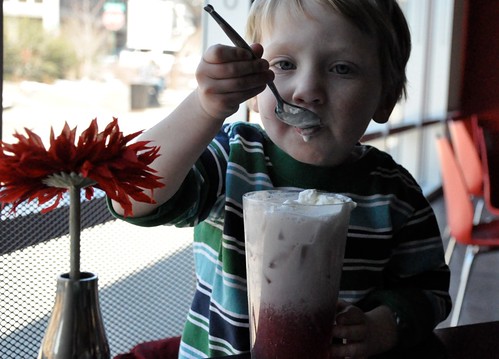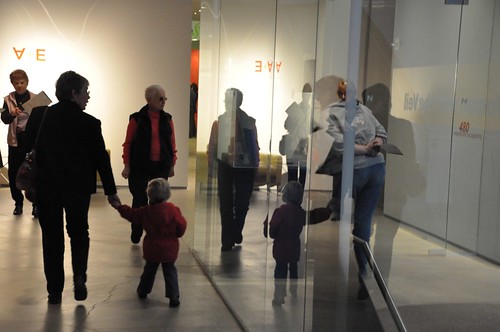Image courtesy of libbyrosof.
The Gee’s Bend quilts — with their eye-popping beauty and sloppy technique — have been on display at the Nevada Museum of Art. The stitches are uneven, points are mismatched, nothing is squared, but each quilt is bold in terms of color, design and choice of fabric.
Many of the quilters from Gee’s Bend, Alabama are descendants of slaves who stayed on as tenant farmers after the Civil War and formed a small, isolated, all-black community. Their distinctive quilting style has been passed down for more than six generations, according to a collective history of the quilters.
When I learned that these quilts were coming to town, I called my mother-the-quilter and asked if she’d like to go. The museum was crowded and my small son impatient, so I raced through the exhibit, stopping to study the one or two quilts to which my eyes were drawn. The designs were minimalist because the women had little time to spend on them.
Rippled and uneven, the quilts shared a theme picked up and reworked again and again, in corduroy swatches and cornmeal sacks, in leisure suits and blue jeans. These quilters were risk-takers because they rejected the rules that govern quilting and embraced the mistake, the meandering line, the dead end.
“American quilts elsewhere generally esteem perfection. Chance and improvisation seem to be operating principles here, the beauty deriving from inconsistencies played off against hierarchical forms,” according to an earlier New York Times review.
and says the blackberry cream soda is “Delish.”
Yet these quilts were more than just jazzy geometry, they were stories, according to the New York Times and a National Public Radio interview. Denim in one quilt was cut form old work pants, the only memento from a dead husband. The corduroy used in another came from scraps saved from years spent mass-producing pillow shams for Sears, while its design might have been inspired by the newspaper and magazine scraps used to insulate the quilter’s home.
As I stood before one stunning and imperfect quilt, I thought about writing and how important it was for me to begin taking more risks, to make more mistakes, to meander in order that my own stories are told, no matter how beautiful or flawed they are.




Have you read Irene Latham's LEAVING GEE'S BEND yet? A must!
I've put it on hold at the library and am looking forward to reading it.
you are kind of my hero,
you know that?